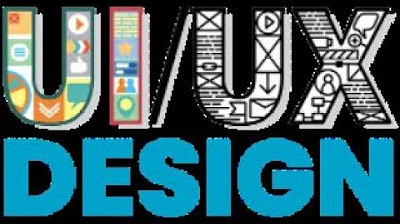Create Better User Experiences with the 7 UX Factors - Design Tool Tuesday
Summary
TLDRThe video introduces a ux framework called the honeycomb of user experience with 7 key factors - usefulness, usability, findability, credibility, accessibility, desirability and value. It explains how each factor impacts the overall user experience and provides guidance for ux designers to evaluate and optimize products using this framework. The presenter gives examples of using the honeycomb model to identify gaps, create hypotheses and drive measurable ux outcomes when working with stakeholders. The goal is to make more informed decisions to design better, well-rounded user experiences.
Takeaways
- 💭 The 'Honeycomb of User Experience' by Peter Morville (2004) serves as a foundational framework for improving UX by addressing specific factors.
- 💡 Usability and usefulness are core to the UX, emphasizing the importance of products being practical, beneficial, and meeting user needs to complete tasks and achieve goals.
- 🔎 Findability is crucial, requiring clear affordances and intuitive navigation to help users easily locate what they're seeking within a product.
- 📝 Credibility stems from brand perception and other signals, influencing user engagement based on trust and expectations of the product.
- ♻️ Accessibility is paramount, demanding that products cater to users of all abilities, ensuring inclusive experiences that comply with various standards.
- 😍 Desirability focuses on the emotional and aesthetic appeal of a product, highlighting the importance of design in attracting users.
- 🎁 Value is central, encapsulating the overall benefit derived from the product, influenced by its usefulness, usability, findability, credibility, accessibility, and desirability.
- 📊 The framework encourages a holistic approach to UX design, advocating for the evaluation and enhancement of each factor to create superior user experiences.
- 📚 Practical application of the framework involves using it to assess current projects, identify areas for improvement, and guide UX strategies and outcomes.
- 👨💻 Engagement with stakeholders is enhanced by structuring improvements around the framework, leading to more informed decision-making and impactful design.
Q & A
What framework does the speaker introduce for evaluating and planning UX?
-The speaker introduces the Honeycomb model of user experience, developed by Peter Morville in 2004. It consists of 7 key factors that influence UX - useful, usable, findable, credible, accessible, desirable, and valuable.
What does the 'useful' factor in the Honeycomb framework refer to?
-The 'useful' factor refers to how well the product or service fulfills the user's needs and helps them complete their goals or tasks. It should provide enough value and practical benefit to the user.
What does the 'usable' factor refer to?
-The 'usable' factor refers to how easy and frictionless it is for users to complete tasks and achieve their goals using the product. It should be efficient and effective without major usability issues.
Why is findability an important UX factor?
-Findability is important because users need to be able to easily find what they are looking for within a product. This requires understanding user needs and journeys, and enhancing information architecture and navigation so key tasks and content are easy to find.
What builds credibility for a product experience?
-Credibility comes from brand perception, recommendations, look and feel, and giving the user ownership and control. These factors build user trust and set proper expectations about the experience.
Why has accessibility become an important factor in UX?
-Accessibility is crucial because products need to be inclusive and support users of all abilities. There are legal compliance requirements as well but also commercial and ethical necessity.
Where does desirability tend to play a key role in UX?
-Desirability in areas like visual and emotional design helps attract users initially and persuades them to choose a product over competitive options. It influences perceived value and experience quality.
How can the Honeycomb model be used in UX projects?
-The model can be used to evaluate experiences based on the 7 factors, identify gaps and areas for improvement, drive outcomes and hypotheses to test, and provide structured messaging when briefing stakeholders.
What role does value play in the Honeycomb model?
-Value represents the balance of benefits the experience provides against any costs like price. It depends on optimizing the other 6 areas to maximize the value fit for users.
Why is having a UX evaluation framework beneficial?
-Using a structured framework makes analysis more complete, improvement choices clearer, and messaging to stakeholders more credible. It leads to better UX decisions compared to general subjective judgments.
Outlines

This section is available to paid users only. Please upgrade to access this part.
Upgrade NowMindmap

This section is available to paid users only. Please upgrade to access this part.
Upgrade NowKeywords

This section is available to paid users only. Please upgrade to access this part.
Upgrade NowHighlights

This section is available to paid users only. Please upgrade to access this part.
Upgrade NowTranscripts

This section is available to paid users only. Please upgrade to access this part.
Upgrade Now5.0 / 5 (0 votes)





